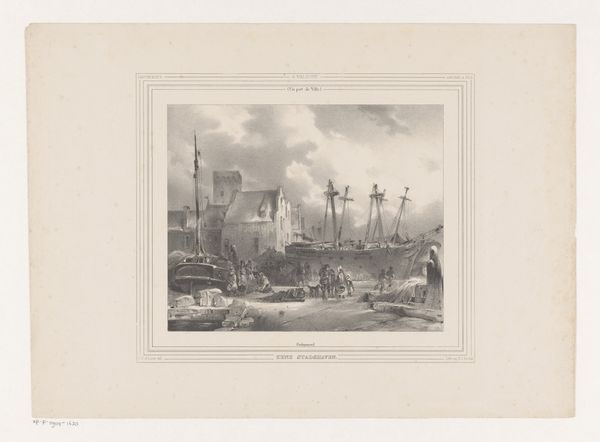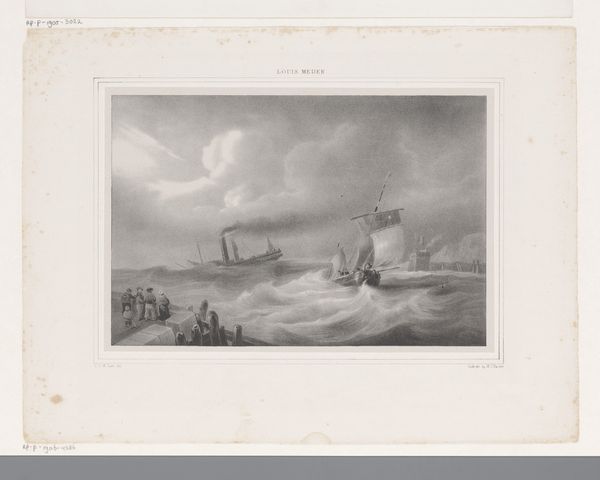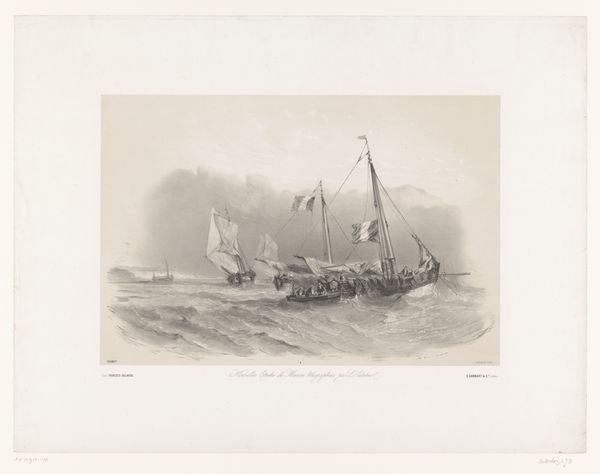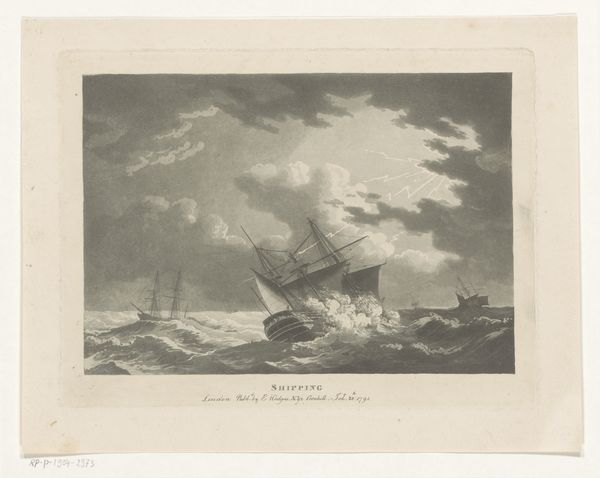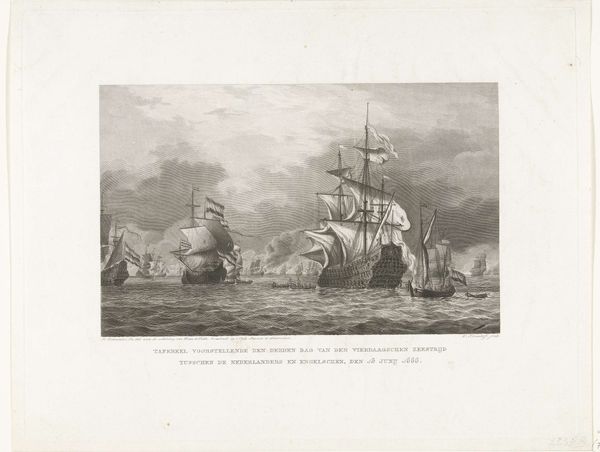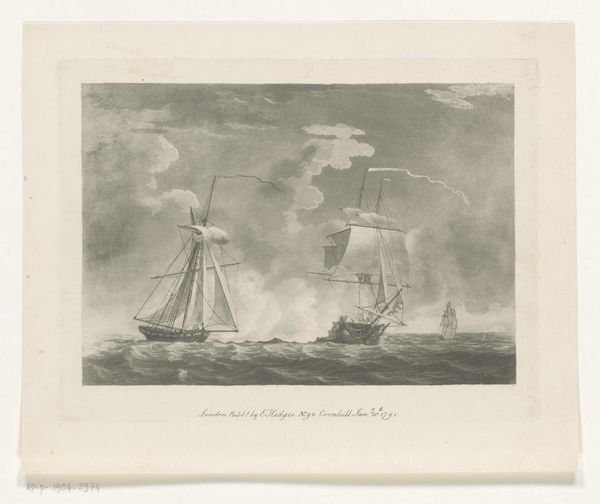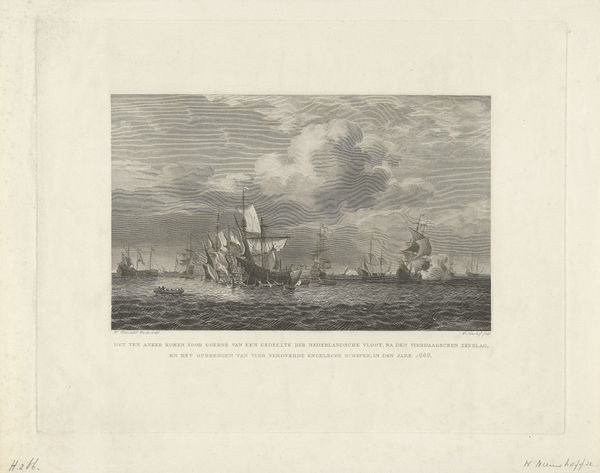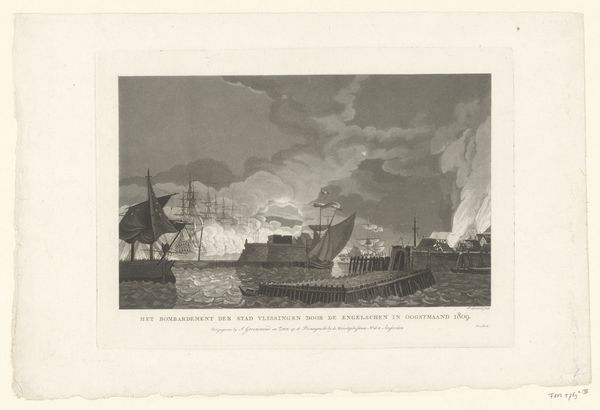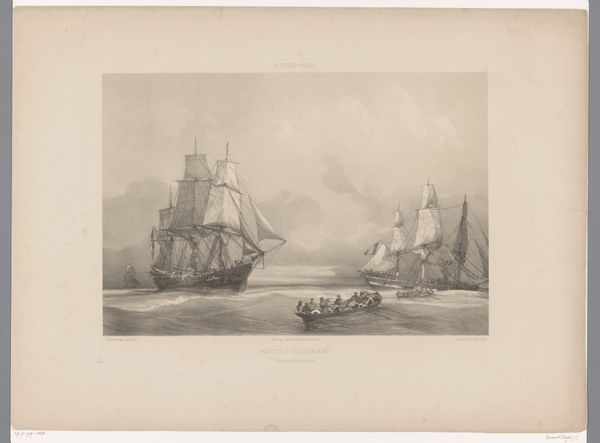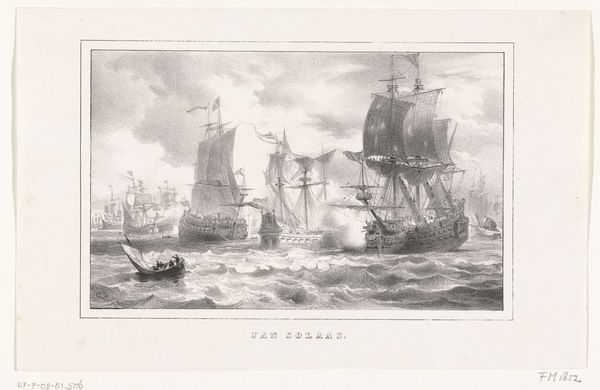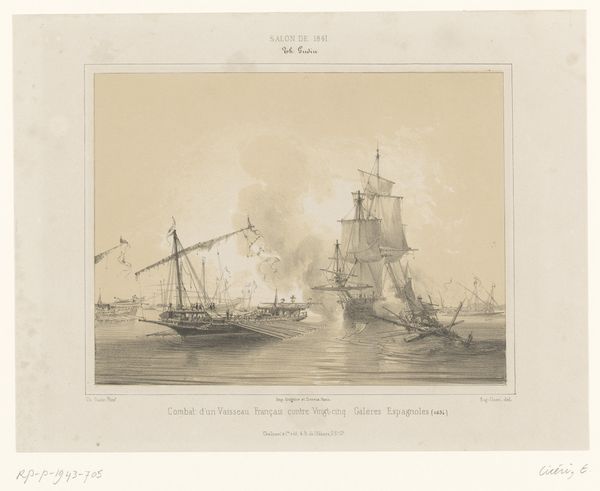
Het overvaren van de ketting in de Medway, 1667 1818 - 1876
0:00
0:00
Dimensions: height 182 mm, width 270 mm
Copyright: Rijks Museum: Open Domain
Carel Christiaan Antony Last created this print of the Raid on the Medway in 1667. The printmaking process itself is crucial to understanding its social context. Prints are made using a matrix, which is a block of material such as wood, metal, or stone. Here, the artist would have used a metal plate to create the image. This plate would have been etched or engraved with lines, which were then filled with ink and transferred to paper. Printmaking allows for the mass production of images, making art accessible to a wider audience. This democratizing effect is significant; it moves art away from being solely for the wealthy or elite. The social significance lies in its ability to disseminate information and influence public opinion. Prints like these played a vital role in shaping perceptions of historical events. The level of detail achieved through the printmaking process, combined with its reproducibility, made it a powerful tool for propaganda and the dissemination of information. By focusing on the material and making of this artwork, we gain insight into the social forces at play during its creation and consumption, challenging traditional notions of art.
Comments
No comments
Be the first to comment and join the conversation on the ultimate creative platform.
